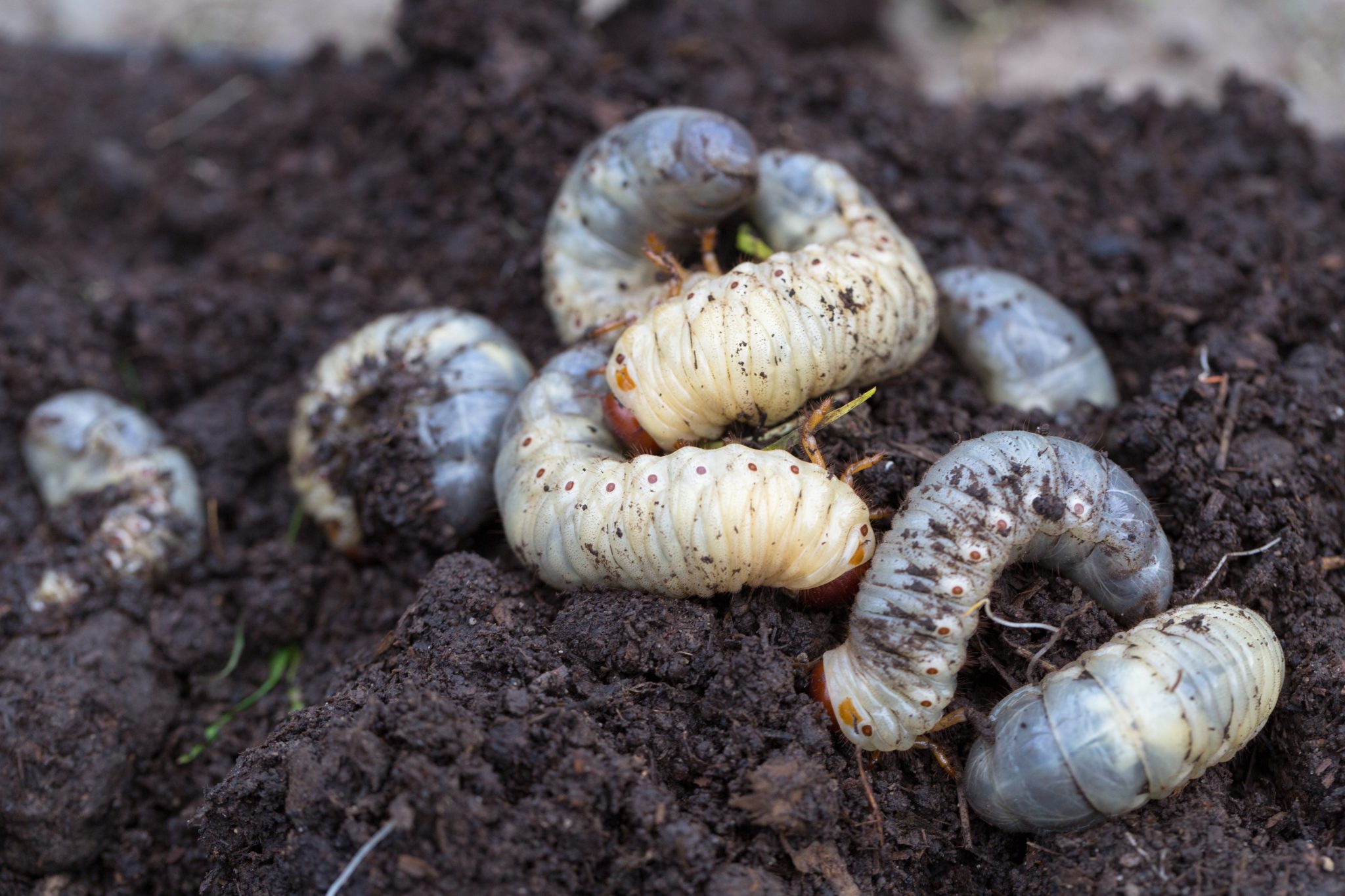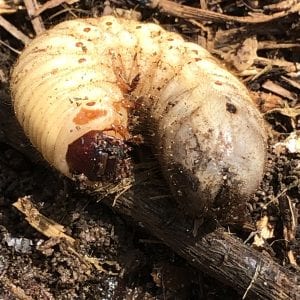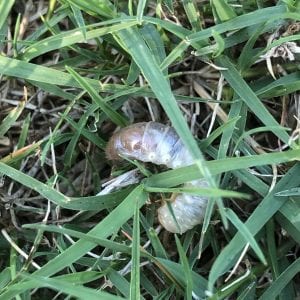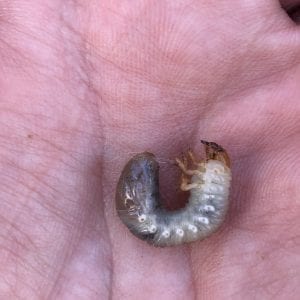Lawn & Garden

White grubs can attack most turf grasses. Learn how to recognize grubs and their damage and how to control them.
White grubs are the larval (immature) stages of many different species of beetles. Some of the most common white grub species in Alabama are May/June beetles, green June beetles, Japanese beetles, and masked and southern chafers. Most grubs mature in 1 year; others will take 2 or 3 years. Grubs cause damage to turf by feeding on the roots. Grubs may cause dead or dying patches of grass in the spring or fall. Moles digging in lawns or flocks of birds feeding on lawns may indicate the presence of grubs.
Most turf grasses are subject to attack by white grubs. Depending on the species, adult beetles emerge primarily between April and June, mate, and lay eggs. The grubs soon hatch and begin feeding. Small grubs are the easiest to control. Treatment in May through August is usually the most effective because eggs have hatched and the larvae (grubs) are still small. Grubs overwinter deep in the soil and move up the following spring. If they are a “one-year” species, they pupate and emerge as adults in the same year. In this case, treatment to damaged areas in late March to mid-April may kill larvae before they pupate. However, the treatment of smaller grubs is still the preferred method.
Description
White grubs (order Coleoptera, family Scarabaeidae) are 0.5 to 1.5 inches long. They have three pairs of legs near the head and characteristically rest in a C-shaped position. Their heads and tail are brown. Green June beetle grubs crawl on their backs with their legs up. Grubs can be identified by the pattern of rasters (spines) on the tail ends. Identification of grubs is important to know how and when to treat.
Damage
Grub-damaged turf feels loose and occasionally can be rolled up like a carpet. However, when the grass is actively growing in the summer, infested areas may remain green on top even though the roots are being eaten away. These areas will not green up the following spring.
Damage from cold, drought, nematodes, or maintenance practices can resemble grub feeding. Do not guess about grub damage and treatment! Use a knife or spade to cut multiple, square-foot samples 3 inches deep along the perimeter of the damaged area. Fold the sample back and examine the soil for grubs. Treatment is recommended when an average of three to five grubs is found per square foot. Carefully replace the sod. Beetles may infest the same areas year after year. Most new generation grubs are present in the soil by mid-August and are easiest to control at this time.
Control
Always sample for grubs before treating. If the soil is dry, watering will cause the grubs to move near the soil surface. However, white grubs will NOT climb above ground when the turf is watered or flushed with soapy water so always cut the turf back and look in the soil for them. Water thoroughly following insecticide applications, and avoid using a granular product when the foliage is wet.
Japanese Beetle (Popillia japonica)
Milky spore products (containing bacteria that infect only Japanese beetle grubs) have produced limited success in controlling grubs. Milky spore bacteria at best work only on Japanese beetle grubs to suppress populations over time. Japanese beetle traps in home landscapes can do more harm than good. Adult beetles that are attracted to the area may not make it to traps, but end up feeding on susceptible ornamentals such as roses, crepe myrtles, and maples among others. Planting less susceptible plants, such as boxwood, dogwood, holly, or lilac, may be an alternative.
Precautions
DO NOT use pesticides on plants other than those listed on the label. The site and/or use may change. ALWAYS FOLLOW LABEL DIRECTIONS.
Download a PDF of Controlling White Grubs on Lawns and Turf, ANR-0177.





